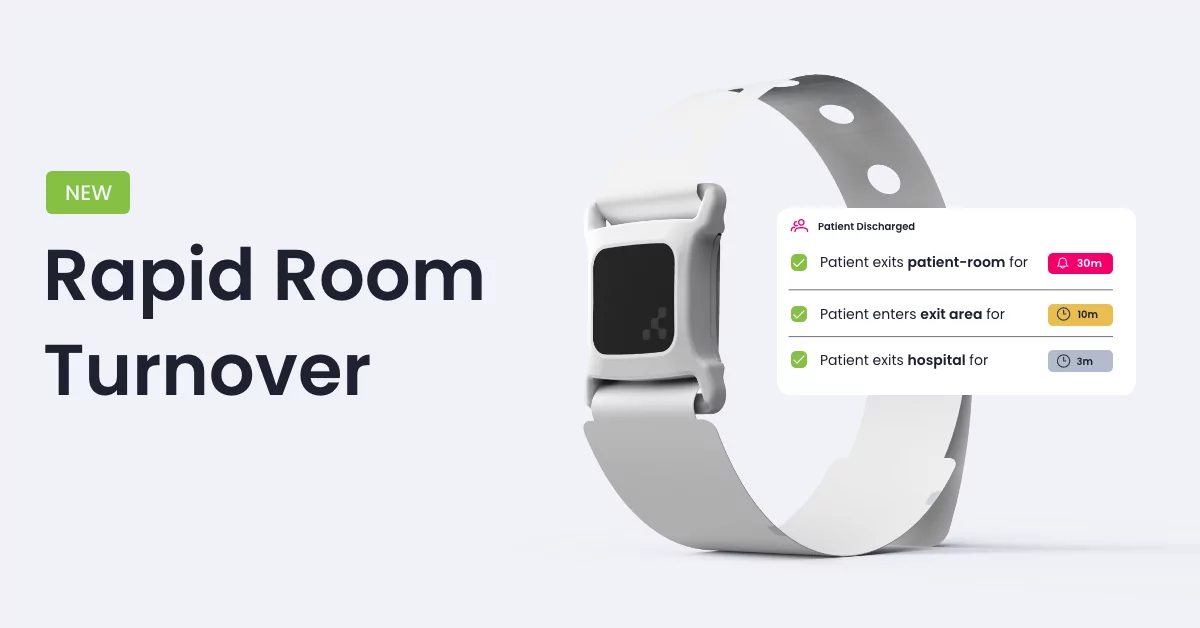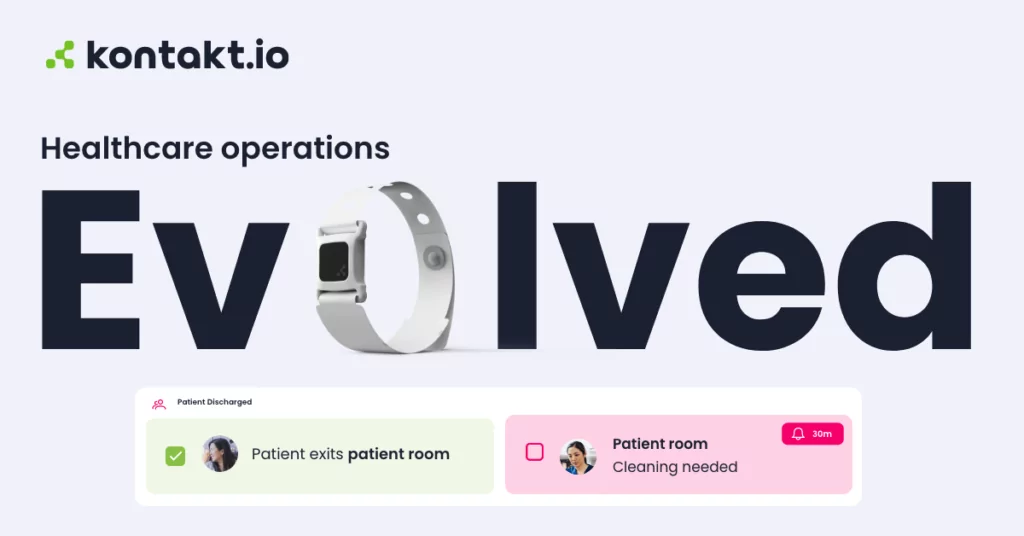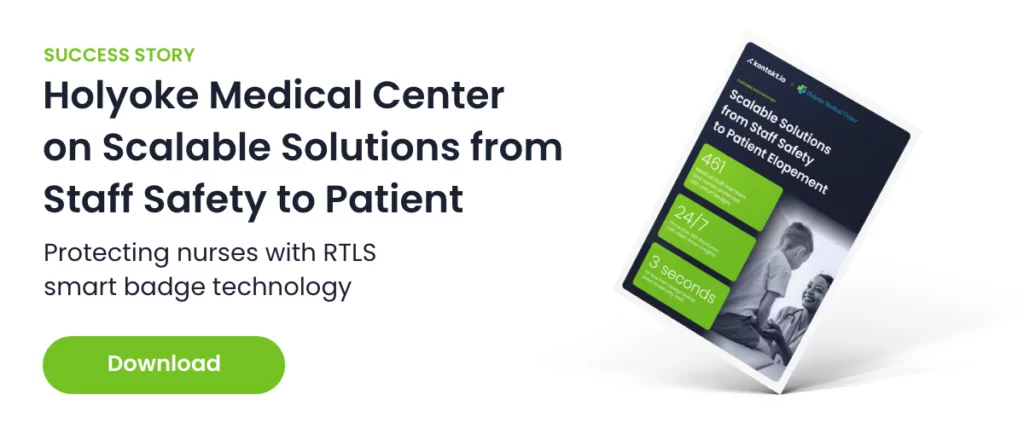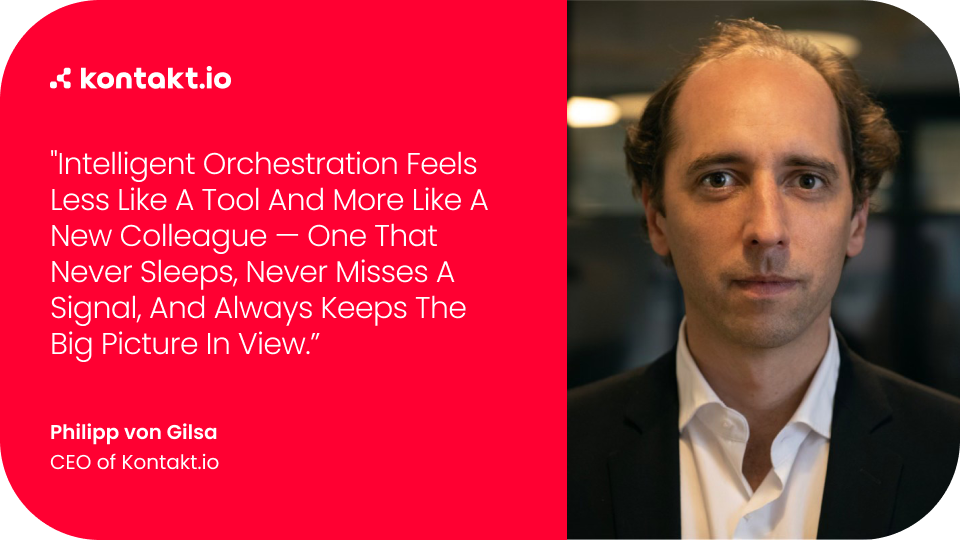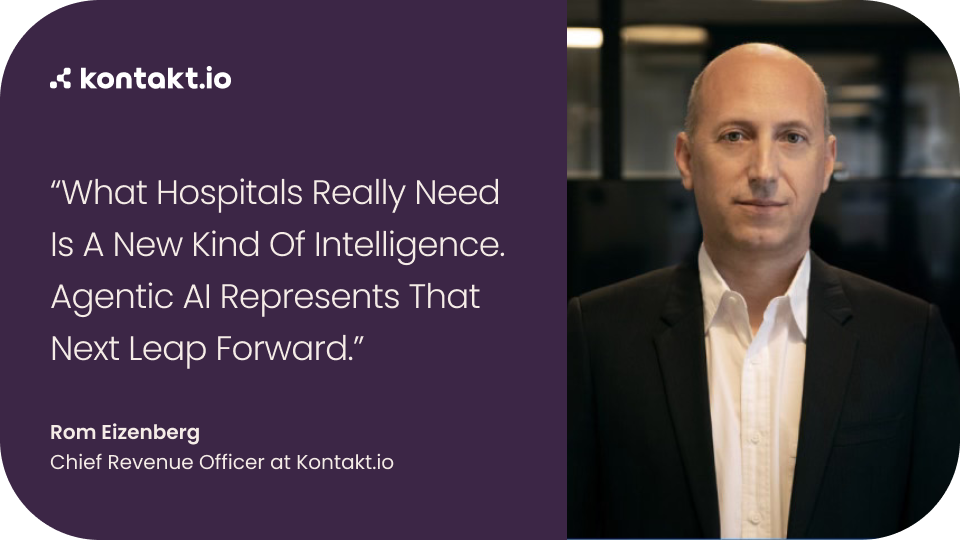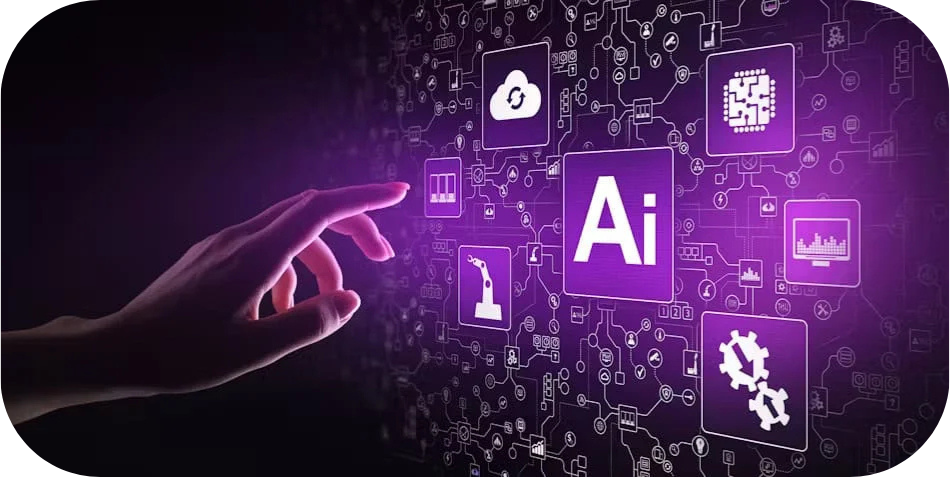Hospitals currently lose two hours of functionality per room turnover during each patient discharge. Often, this can make the difference between a patient being assigned a bed and the ED becoming overwhelmed by boarders.
But what if you could automate the workflows for discharges and transfers? What if you could save even just an hour of that lost turnover time?
Kontakt.io’s Rapid Room Turnover solution leverages hospital RTLS (Real-Time Location Services) data to first identify when a patient has been discharged and exited the building and then alert Environmental Services (EVS) teams. RTLS in hospitals allows for real-time automation of these processes, minimizing inefficiencies. Hospitals can now automate and expedite cleaning workflows, saving time and money while delivering an improved patient care experience through healthcare RTLS orchestration.
Reducing Turnover Time by 50%
The results of Rapid Room Turnover are real and measurable. By bringing that room turnover workflow down to 60 minutes, hospitals can see two very clear outcomes:
- 4.17% functional increase in bed capacity by reducing inefficiencies
- $1.52M in additional revenue from incremental admissions
The soft ROI is significant and impactful as well. Beyond the hard business outcomes, hospitals can also expect results, including:
- Reducing ED boarding and wait times while extending hospital capacity
- Empowering EVS and Nursing teams, reducing burnout
- Improving operational efficiency and bed utilization
- Increasing patient satisfaction scores
- Powering continuous operational improvement with real-time data through RTLS in healthcare
How Rapid Room Turnover Works
Discharge Detection using RTLS in hospitals identifies when a patient has departed from the hospital following a discharge prior to clinical staff documentation with no nurse action required.
Automated Workflow Triggers, powered by hospital RTLS data, alert Environmental Services (EVS) teams via mobile as soon as a room is ready for cleaning, eliminating manual handoffs and delays. No more waiting for paperwork.
Streamlined Staff Workflows reduce administrative tasks so nurses can keep their focus on patient care and top-of-license work. Using dynamic task prioritization, the platform ranks and updates cleaning priorities automatically based on real-time patient needs—not static schedules.
Real-Time Progress Monitoring gives supervisors a live dashboard of room status across the facility. No more check-ins, no more blind spots.
Data-Driven Optimization powers continuous improvement as turnover time is captured and reported, forecasting and “right-sizing” each step in the process in real-time.
Powering Intelligent Orchestration
This is not automation for the sake of automation. At Kontakt.io, we power intelligent orchestration in hospitals. This means enhancing patient flow, staff productivity, removing friction, unblocking bottlenecks, and helping teams focus on caring for their patients.
By leveraging healthcare RTLS platforms that also enable medical device tracking, health systems can orchestrate both human and equipment workflows for faster throughput. For example, asset tracking in hospitals ensures that essential medical equipment is available immediately post-discharge—avoiding any delays in care for the next patient. Medical device tracking complements a Rapid Room Turnover solution by eliminating the hours spent manually locating equipment needed for room prep or incoming patients.
For health systems today, every minute counts and every dollar is scrutinized. Together, we can do more with less and deliver better, faster, more efficient care at every point of the patient journey, from admission to discharge.
